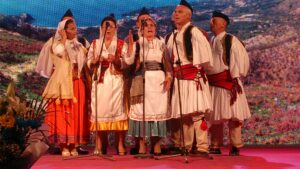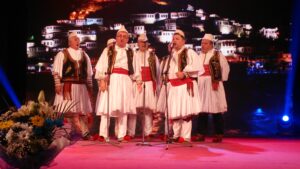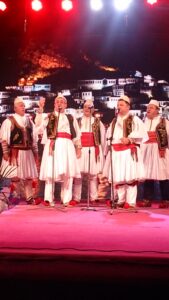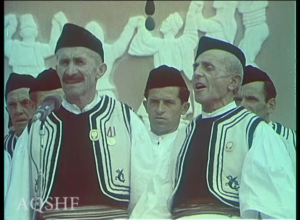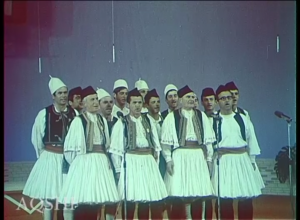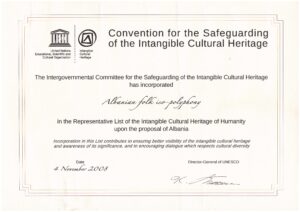Albanian iso-polyphony is part of the Albanian traditional folk music, and as such, is included in the UNESCO Intangible Cultural Heritage List.Four provinces of southern Albania: Labëria, Çamëria, Myzeqeja, and Toskëria have polyphonic singing as part of their culture. Labëria is particularly known for his multi-voice song, which can be made up of two, three, or four voices. Two-voice songs are sung only by women, while three-voice songs can be sung by both men and women. Anyway, Labëria’s specialty is the 4-voice song. Four-voice songs are the most complex form of the iso-polyphony.It is thought that in its beginnings traditional Albanian polyphonic music was created and sung with only two melodic lines called Marrësi and Pritësi. The latter probably originally played a non-specific melodic role, a style that can be still found in the two-voice polyphonic singing of the women of Labëria. Over time the Pritësi has been melodically defined in a more precise way. The two-voice polyphony tradition, in which Pritësi plays a well-defined melodic role, is found nowadays in the male songs of the Labëria area.The next voice to evolve into traditional Albanian polyphony was Mbajtësi, which seems to have naturally adapted to the two previous melodic lines, paving the way for three-voice polyphony. The introduction of the Mbajtësi was an important artistic achievement as it brought variety and enrichment to the harmonic interaction between the two previously melodic lines. The Mbajtësi voice is very common in today’s Albanian polyphonic tradition.The last melodic line that evolved into traditional Albanian polyphony was the Hedhësi, with whose presence the four-voice polyphony was born. The introduction of the Hedhësi marked a revolution in the iso-polyphony technique, even if it fundamentally did not change the harmony and vocal interaction of the songs. The 4-voice iso-polyphony is sung only in the province of Labëria and is absent in the songs of Toskëria, Myzeqe, and Çamëria.


